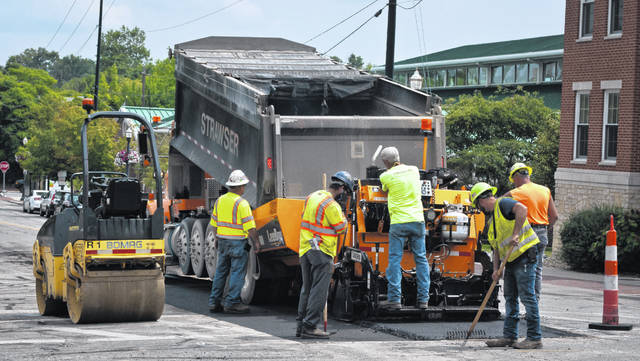
Concerns about traffic issues in Delaware are always at the forefront for city residents. In an effort to engage the residents about the challenges the city faces in regard to transportation issues, the City of Delaware partnered with Murphy Epson, a public relations firm, to create “Access Delaware.”
Among the main objectives “Access Delaware” aimed to achieve were to seek input from city leaders, residents, and community leaders on those challenges, gain a better understanding of why the 2016 road levy failed, and to build trust and transparency between the city and citizens. The results of the research, gathered over a six-month process, were presented by Murphy Epson President Marie Keister at Monday’s Delaware City Council meeting.
Keister said the community was engaged in three ways from March 22 to May 28: key influencer interviews, community forums and online surveys, which was taken by over 1,000 people. Keister said the age of those who participated varied from 25 to 74 years of age, and she added the average years spent in the city of Delaware for those who participated was 15 years, but also included residents who were new and some who had spent their entire lives in the city.
Some of the key takeaways Keister found from her work were non-surprises. Sixty-five percent of participating residents believed the city’s roads could be better maintained. Roads such as Central Avenue and East William Street were mentioned often, specifically The Point (intersection of U.S. Route 36/state Route 37), with solutions such as bypasses often suggested.
Increased communication and more engagement between the city and residents on transportation priorities was also a common theme in responses. “You’re never done in your communication efforts,” Keister told council. “That’s something you have to work on all the time.”
As to why the 2016 road levy failed, Keister said over half the residents who took part in the initiative voted in favor of the levy and were disappointed to see it fail. The proposed levy would have raised the city income tax from 1.85 percent to 2 percent. The additional 0.15 percent would have generated an additional $2.2 million for the city, which, according to city officials, would have been used solely to supplement what the city already spent on street maintenance and infrastructure projects.
Participants offered various speculation as to why the levy ultimately failed. Among the reasons speculated were residents not wanting a permanent tax rate increase, issues with residents working outside of Delaware who also must pay taxes to the cities in which they work, concerns over how the additional tax money would actually be spent, and lack of clarity on why the levy was needed and what it would provide to the city.
The possible reasons for the 2016 levy failing given by the people of Delaware mirrored conversations the city of Powell recently had on the need for additional revenue for infrastructure maintenance and repairs. The city’s solution, which was voted on earlier this month by the Powell City Council, was to put an income tax raise on the November ballot. As part of the ballot measure, Powell included an increase in the tax credit for residents working outside of Powell, as well as a mandate that no less than 25 percent of tax revenue be dedicated to infrastructure maintenance.
In wrapping up her presentation, Keister urged council to make a stronger case for transportation investments, including explaining why “simple” fixes may not be so easy and why funding gaps do exist. “I think if you make that extra effort to help people understand how those things work, and help them understand the problem, inside and out, that will go a long way in giving credibility to any future levy efforts.”
She added, “In short, the public won’t fix a problem they don’t believe exists.”
Keister also suggested the city consider following Powell’s lead in creating a citizens task force to fully investigate what the funding gaps are, why they exist, and what the best practice would be in order to solve them. In January, Powell created an 18-person task force whose job it was to figure out why the city lacked the funds necessary for infrastructure maintenance and how they might be able to generate those funds.
The Powell task force presented their findings to Powell City Council in June, which showed a need for an additional $2 million to fund future repairs. After considering all solutions, including across-the-board cuts to city departments, the committee unanimously suggested an income tax increase would be the only feasible way to generate the necessary $2 million.
“Those people really got their hands into all that detail,” Keister said. “It’s just a very interesting way to help your citizenry feel very engaged and informed.”
City Manager Tom Homan said council would have a follow-up discussion to talk about the recommendations from Keister’s report and what they might entail.


